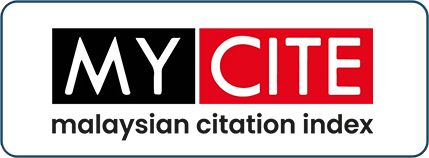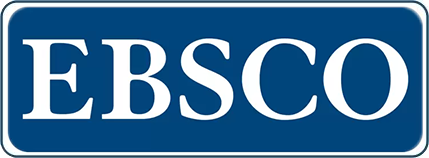Halal Awareness Among Orang Asli in Sungai Chiong Village, Banding Lake, Perak
DOI:
https://doi.org/10.33102/jfatwa.vol16no1.218Keywords:
Halal, Education, Awareness, Orang AsliAbstract
Industrial Master Plan (IMP) 2006-2020 aims to make Malaysia to become global hub for the production and trade in Halal goods and services. In order to reach this vision, all the information and output must be channeled throughout all segments of people including the underserved community such as the Orang Asli community. One of the methods for delivering the awareness was education program. Therefore, the Halal awareness program was conducted under the purview of the IIUM International Institute for Halal Research and Training (INHART) on May 2015 in Orang Asli settlement Sg. Chiong village in Temenggor Lake, Gerik Perak. The objective of this paper is to study the level of Halal awareness amongst the Orang Asli community in Sg. Chiong village, Perak and to evaluate the issues and challenges in enhancing the Halal awareness and education in this area. This study uses a qualitative approach for the analysis, on-site observation and also semi-structured interview as part of the Knowledge Transfer Program (KTP) report. The result showed that the level of Halal awareness amongst the Orang Asli community in this settlement is in low level and it can be continuously improving in the future. In order to make Orang Asli community well aware and educated on Halal, necessary steps must be taken during the early ages of childhood to ensure the chain of knowledge would be continuous and sustainable throughout generations.
Downloads
References
Alqudsi, S. G. (2014). Awareness and Demand for 100% Halal Supply Chain Meat Products. Procedia - Social and Behavioral Sciences, 130, 167–178. http://doi.org/10.1016/j.sbspro.2014.04.021
Ambali, A. R., & Bakar, A. N. (2013). Ḥalāl food and products in Malaysia : People ’ s awareness and policy implications. Intellectual Discourse, 1, 7–32.
Anonymous. (2012). Home Remedies for Instestinal Worm Treatment. Retrieved from http://www.medindia.net/homeremedies/intestinal-worms-treatment.asp
Aziz, Y. A. (2012). The Role Of Halal Awareness and Halal Certification in Influencing Non-Muslims ’ Purchase Intention. In 3rd International Conference on Business and economic Research Proceeding (pp. 1819–1830).
Chetpattananondh, P. (2012). Overview of the Agarwood Oil Industry. In IFEAT International Conference Essential Asia (pp. 131–138).
DSM. (2009). Malaysian Standard 1500:2009 Halal Food-Production,Preparation, Handling and Storage -General Guidelines (Second Revision).
Economic Planning Unit. (2015). Eleventh Malaysia Plan 2016-2020. Kuala Lumpur.
eWarta. (2014). Kerajaan bantu pelajar Orang Asli lanjut pelajaran. Retrieved from http://ewarta.mara.gov.my/2014/04/29/kerajaan-bantu-pelajar-orang-asli-lanjut-pelajaran/
Golnaz, R., Zainalabidin, M., Mad Nasir, S., & Eddie Chiew, F. C. (2010). Non-muslims’ awareness of Halal principles and related food products in Malaysia. International Food Research Journal, 17(3), 667–674.
Haemamalar, K., Zalilah, M. S., & Neng Azhanie, a. (2010). Nutritional status of orang asli (Che Wong Tribe) adults in Krau Wildlife reserve, Pahang. Malaysian Journal of Nutrition, 16(1), 55–68.
JAKOA. (2015). Action Plan for Education Development of the Orang Asli Community in the Suburbs. Retrieved October 1, 2015, from http://www.jakoa.gov.my/en/orang-asli/pendidikan/
Kamarudin, K. H. (2015). Resilience and Sustainability of a Community : the Story of Orang Asli of Royal Belum-Temengor, 35–66.
Kasimin, A. (1991). Religion and social changes among the indigenous of the Malay Peninsular. Dewan Bahasa dan Pustaka.
Mustapha, R., Omar, M., Hassan, S. N. S., Yasin, R. M., & Salleh, N. M. (2010). Human Capital Development of Orang Asli Youth: Supportive and Suppressive Factors. Procedia - Social and Behavioral Sciences, 7(C), 592–600. http://doi.org/10.1016/j.sbspro.2010.10.080
Othman, C. N., Lamin, R. A. C., Farooqui, M., Sihab, N., & Said, S. M. (2012). Lifestyle Related Diseases amongst Orang Asli in Peninsular Malaysia-Case Study. Procedia - Social and Behavioral Sciences, 36(June 2011), 383–392. http://doi.org/10.1016/j.sbspro.2012.03.042
Qaradawi, Y. (1993). The Lawful and The Prohibited in Islam. AlFalah Foundation.
Rahim, N. F., Shafii, Z., & Shahwan, S. (2013). Awareness and Perception of Muslim Consumers on Non-Food Halal Product. Journal of Social and Development Sciences, 4(10), 478–487.
Shahjahan, M., Halim, N. A. B. A., & Izani, N. (2007). Antimicrobial Properties of “Kelulut” (Trigona Spp) Honey. Malaysian Journal of Medical Sciences, 14(1), 107.
Sinar Harian. (2012). Transformasi pendidikan Orang Asli garis tujuh insiatif. Retrieved from http://www.sinarharian.com.my/tranformasi-pendidikan-orang-asli-gariskan-tujuh-inisiatif-1.58817
Teng, P. K. (2013). Awareness, Recognition and Intention : Insights from a Non-Muslim consumer Survey Regarding Halal Labeled Food Products., (June), 89–101.
Utusan Malaysia. (2013). Islam berkembang dalam kalangan Orang Asli. Retrieved from http://ww1.utusan.com.my/utusan/Utara/20130314/wu_02/Islam-berkembang-dalam-kalangan-Orang-Asli
Downloads
Published
Issue
Section
License
The copyright of this article will be vested to author(s) and granted the journal right of first publication with the work simultaneously licensed under the Creative Commons Attribution 4.0 International (CC BY 4.0) license, unless otherwise stated.















